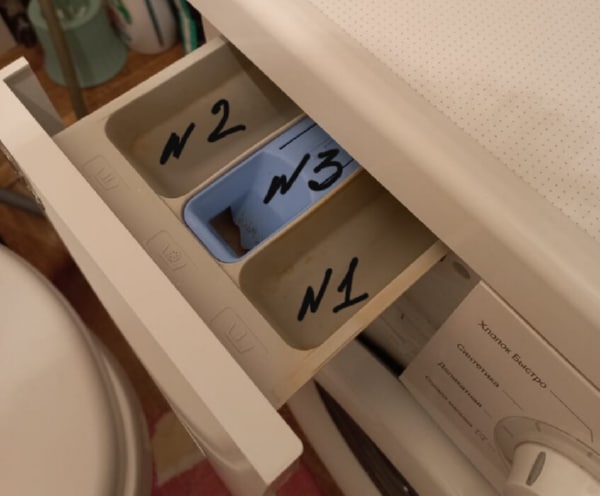ADVERTISEMENT
Sure! Here’s an article titled “It Turns Out That Not Everyone Knows What the Three Compartments of a Washing Machine Are For”:
🧺 It Turns Out That Not Everyone Knows What the Three Compartments of a Washing Machine Are For
Washing machines are a staple in nearly every household, and while they make our lives easier by cleaning our clothes, many people still aren’t fully aware of the features they have — particularly the three compartments in the detergent drawer. Sure, you’ve probably used them without much thought, but do you know exactly what each compartment is designed for?
If you’ve ever wondered why there are three separate sections in your washing machine’s detergent drawer, or if you’re just looking to optimize your laundry routine, this guide is for you. Let’s dive into the three compartments and reveal what they’re really meant for, so you can get the best results from your machine!
🧴 The Three Compartments of a Washing Machine: What They’re Really For
Most modern washing machines have a detergent drawer that features three separate compartments. These are typically labeled with symbols or letters to help you know where to put different types of detergent or additives. Understanding how each compartment functions will help you use your washing machine more effectively, ensuring cleaner clothes, better care for fabrics, and the most efficient use of your laundry products.
1. First Compartment – Detergent for the Main Wash
The first compartment, usually marked with the symbol “I” (or sometimes a number “1”), is for detergent that will be used during the main wash cycle.
- What Goes Here? This is where you place your regular laundry detergent (liquid or powder). You typically use this compartment for the detergent that works to remove dirt, stains, and odors from your clothes.
- When Is It Used? The detergent from this compartment is dispensed early in the washing cycle during the main wash, once the machine has filled with water and begun agitating the clothes.
- Tip: Make sure not to overfill this compartment — too much detergent can cause excessive sudsing, which may affect the washing machine’s performance and could even lead to residue buildup on your clothes.
2. Second Compartment – Fabric Softener and Additives
The second compartment, often marked with the symbol “II” or sometimes a flower symbol (🌸), is for fabric softener, conditioners, or any other additives you might want to use in the final rinse cycle.
- What Goes Here? This compartment is specifically for products like fabric softener that soften and freshen clothes during the final rinse. You can also add scent boosters, stain removers, or even brighteners depending on your preferences.
- When Is It Used? The detergent or additive in this compartment is released during the final rinse of the wash cycle, which helps your clothes feel softer and smell fresher.
- Tip: Be careful not to overfill this compartment, as excess softener can leave residue on clothes, particularly if the fabric softener is too concentrated.
3. Third Compartment – Pre-Wash Detergent or Stain Remover
The third compartment, marked with the symbol “Pre-wash” or sometimes “P”, is for detergent or cleaning agents used in the pre-wash cycle. This cycle is an optional step that some washing machines use to rinse clothes before the main wash.
- What Goes Here? This compartment is meant for pre-wash detergent, stain removers, or liquid laundry boosters that help remove heavy stains, dirt, and grime from clothes before the main wash cycle begins.
- When Is It Used? The detergent or stain remover placed in this compartment is dispensed early in the cycle — during the pre-wash phase — which typically occurs before the main washing cycle starts.
- Tip: You won’t need to use this compartment for every load of laundry. It’s ideal for clothes that have heavy stains (e.g., mud, grease, or ink), as the pre-wash phase loosens the dirt before the main wash cycle begins.
🧴 How to Use Each Compartment Effectively
To get the most out of your washing machine, it’s important to use the detergent compartments properly. Here’s a quick summary of how to use each one:
For Complete Cooking STEPS Please Head On Over To Next Page Or Open button (>) and don’t forget to SHARE with your Facebook friends
